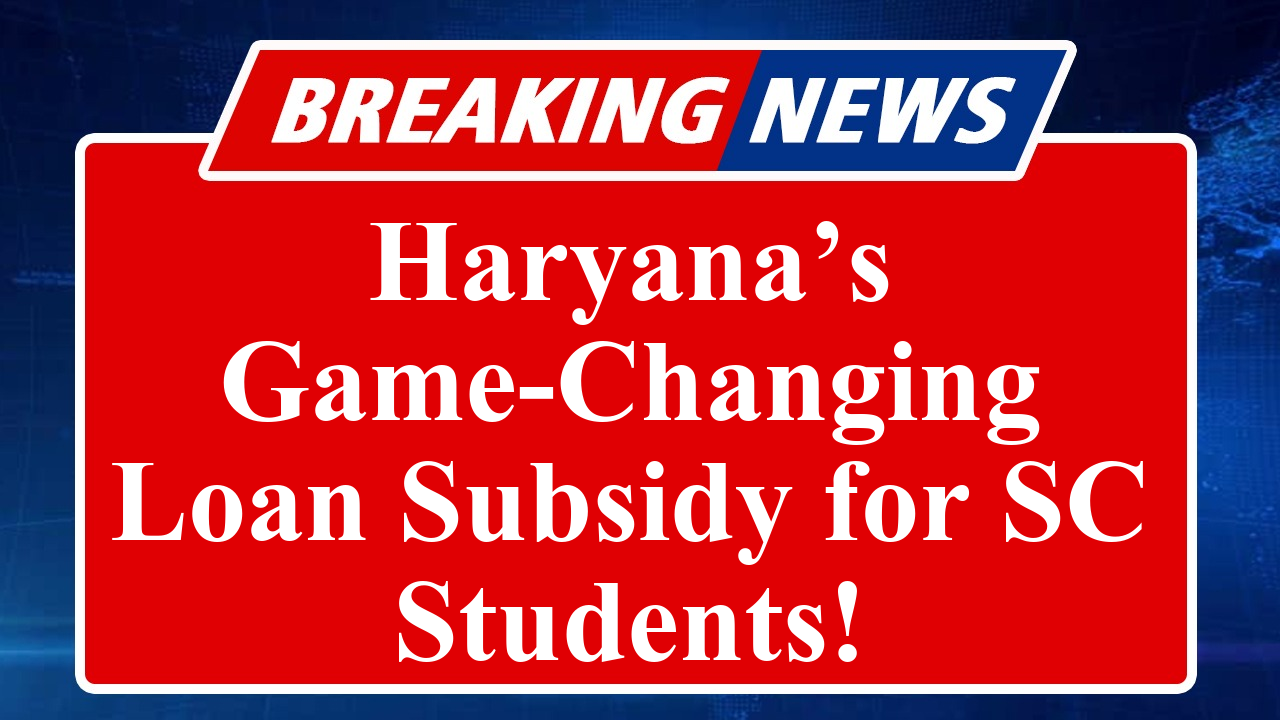Haryana’s government has launched a new education loan subsidy scheme for Scheduled Caste (SC) students, effective from June 13, 2025, aimed at easing financial burdens for higher education. The initiative offers up to 5% interest subsidy on loans for technical and professional courses, targeting economically weaker sections. This move is expected to boost access to quality education for SC students across the state.
Haryana Unveils Education Loan Subsidy Scheme for SC Students
On June 13, 2025, the Haryana government introduced a transformative education loan subsidy scheme specifically for Scheduled Caste (SC) students, aimed at promoting equitable access to higher education. This initiative, rolled out by the Directorate of Higher Education in collaboration with the Haryana Scheduled Castes Finance and Development Corporation (HSFDC), seeks to alleviate the financial strain faced by SC students pursuing technical and professional courses in recognized institutions across India.
Under the new scheme, eligible SC students can avail of an interest subsidy of up to 5% on education loans taken from scheduled banks under the Indian Banks’ Association (IBA) Model Education Loan Scheme. The subsidy applies during the moratorium period, which includes the course duration plus one additional year, ensuring students can focus on their studies without the immediate burden of loan repayments. The scheme covers a wide range of courses, including engineering, medical, management, law, and other professional or technical programs accredited by bodies like the NAAC, NBA, or recognized as Institutions of National Importance.
To qualify, students must belong to the SC community, be permanent residents of Haryana, and have a family income not exceeding ₹3 lakh per annum. The loans, facilitated through the HSFDC and banks like Canara Bank (the nodal bank for the scheme), can cover tuition fees, examination fees, accommodation charges, and other academic expenses. For students pursuing education in India, loans up to ₹20 lakh are available, while those studying abroad can access up to ₹40 lakh, with no collateral required for loans up to ₹7.5 lakh under the Central Sector Interest Subsidy (CSIS) framework.
The scheme aligns with the National Education Policy (NEP) 2020, which emphasizes increasing the Gross Enrolment Ratio in higher education to 50% by 2035. By providing financial assistance to economically disadvantaged SC students, Haryana aims to bridge the gap between aspiration and opportunity. The initiative also includes a digital application process through the Antyodaya-SARAL Portal, ensuring transparency and ease of access. Applicants are required to submit Aadhaar-linked documentation, proof of admission, and income certificates issued by competent authorities.
Officials from the Directorate of Higher Education stated that the scheme is a step toward empowering SC youth by enabling them to pursue higher education without financial constraints. The subsidy is available only once, either for undergraduate or postgraduate studies, including integrated courses. A unique feature of the scheme is the inclusion of a tag or marker on the student’s degree or marksheet, indicating repayment obligations to streamline loan recovery processes.
The announcement has been met with positive responses from student communities and educational institutions in Haryana. Stakeholders view this as a progressive move to uplift marginalized sections, fostering social and economic inclusion through education. The scheme complements existing programs like the Haryana Consolidated Stipend Scheme for SC Students and the Dr. Ambedkar Pre-Matric and Post-Matric Scholarship, further strengthening the state’s commitment to educational equity.
Disclaimer: This article is based on information sourced from government announcements, the Haryana Scheduled Castes Finance and Development Corporation, and related educational portals as of July 6, 2025. Readers are advised to verify details through official channels like the Antyodaya-SARAL Portal or HSFDC for the latest updates.

